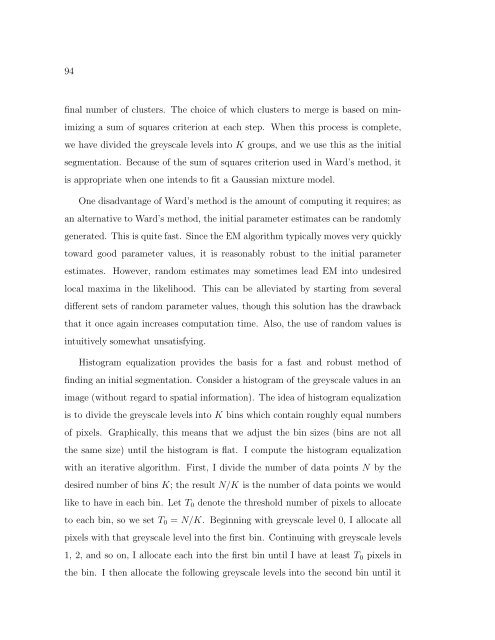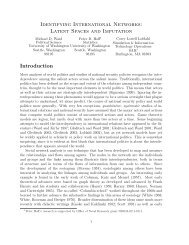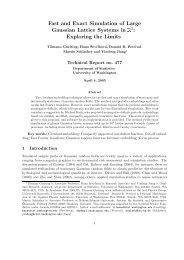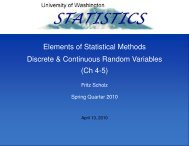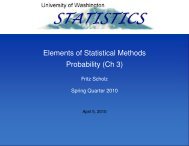View - Statistics - University of Washington
View - Statistics - University of Washington
View - Statistics - University of Washington
You also want an ePaper? Increase the reach of your titles
YUMPU automatically turns print PDFs into web optimized ePapers that Google loves.
94final number <strong>of</strong> clusters. The choice <strong>of</strong> which clusters to merge is based on minimizinga sum <strong>of</strong> squares criterion at each step. When this process is complete,we have divided the greyscale levels into K groups, and we use this as the initialsegmentation. Because <strong>of</strong> the sum <strong>of</strong> squares criterion used in Ward’s method, itis appropriate when one intends to fit a Gaussian mixture model.One disadvantage <strong>of</strong> Ward’s method is the amount <strong>of</strong> computing it requires; asan alternative to Ward’s method, the initial parameter estimates can be randomlygenerated. This is quite fast. Since the EM algorithm typically moves very quicklytoward good parameter values, it is reasonably robust to the initial parameterestimates. However, random estimates may sometimes lead EM into undesiredlocal maxima in the likelihood. This can be alleviated by starting from severaldifferent sets <strong>of</strong> random parameter values, though this solution has the drawbackthat it once again increases computation time. Also, the use <strong>of</strong> random values isintuitively somewhat unsatisfying.Histogram equalization provides the basis for a fast and robust method <strong>of</strong>finding an initial segmentation. Consider a histogram <strong>of</strong> the greyscale values in animage (without regard to spatial information). The idea <strong>of</strong> histogram equalizationis to divide the greyscale levels into K bins which contain roughly equal numbers<strong>of</strong> pixels. Graphically, this means that we adjust the bin sizes (bins are not allthe same size) until the histogram is flat. I compute the histogram equalizationwith an iterative algorithm. First, I divide the number <strong>of</strong> data points N by thedesired number <strong>of</strong> bins K; the result N/K is the number <strong>of</strong> data points we wouldlike to have in each bin. Let T 0 denote the threshold number <strong>of</strong> pixels to allocateto each bin, so we set T 0 = N/K. Beginning with greyscale level 0, I allocate allpixels with that greyscale level into the first bin. Continuing with greyscale levels1, 2, and so on, I allocate each into the first bin until I have at least T 0 pixels inthe bin. I then allocate the following greyscale levels into the second bin until it


